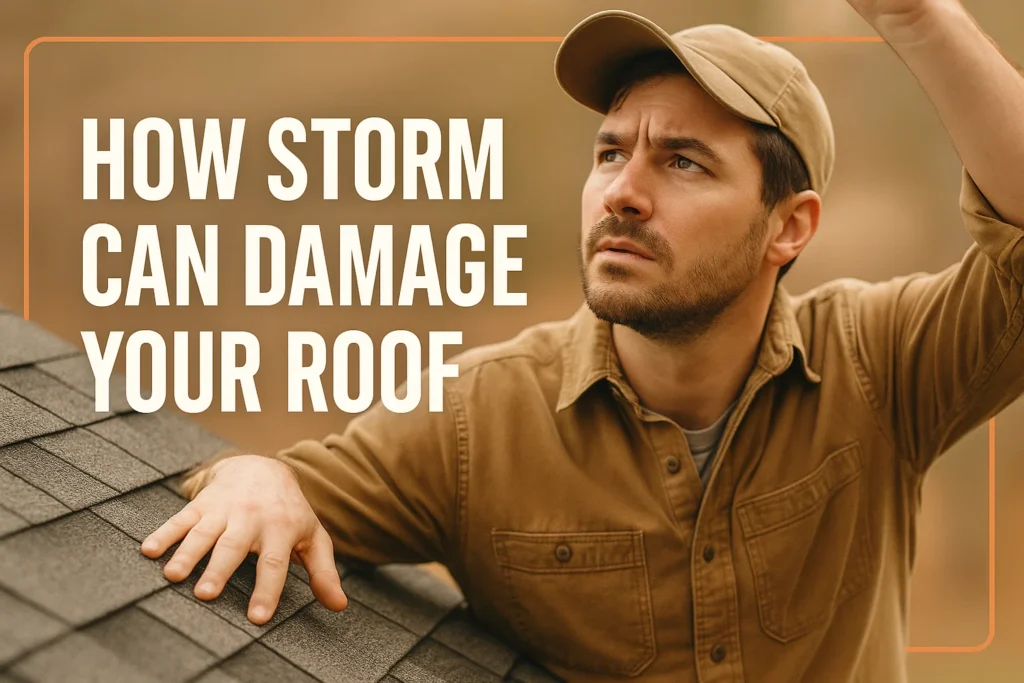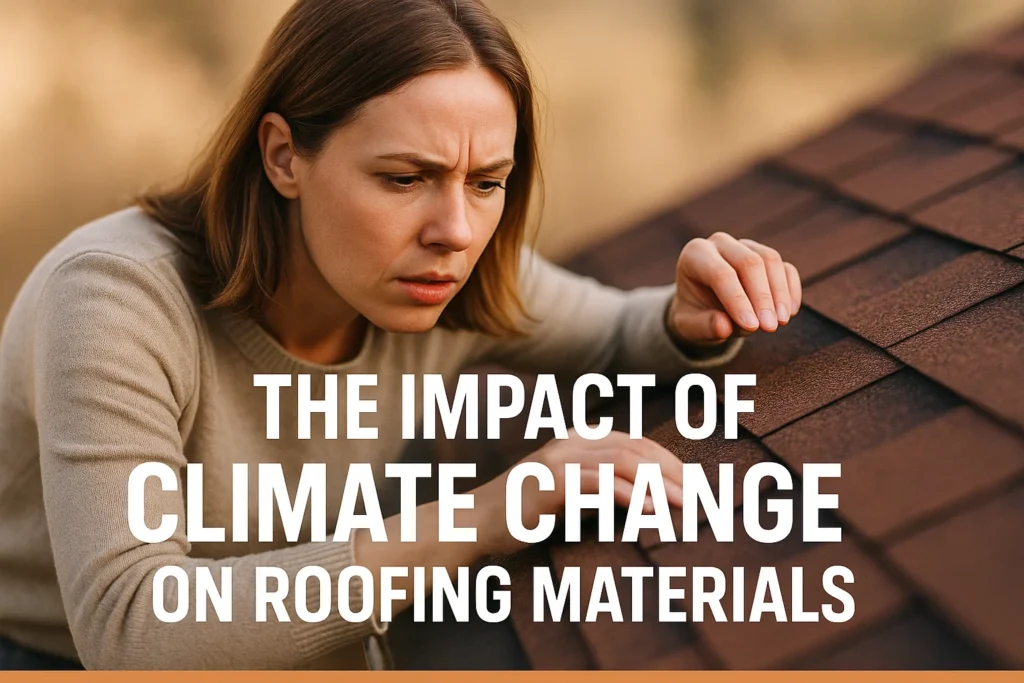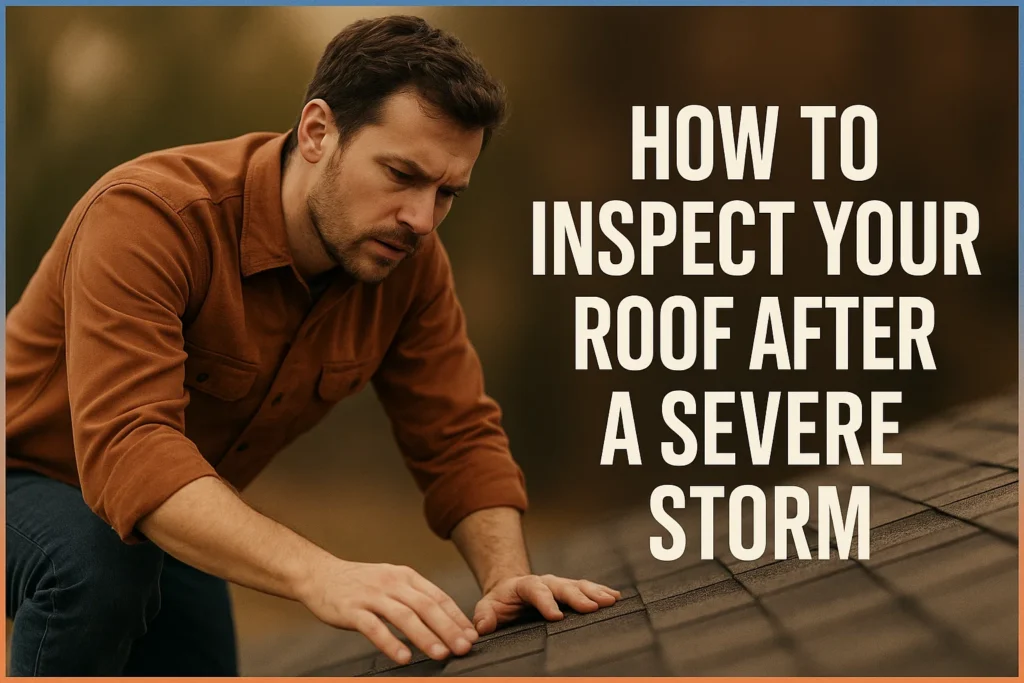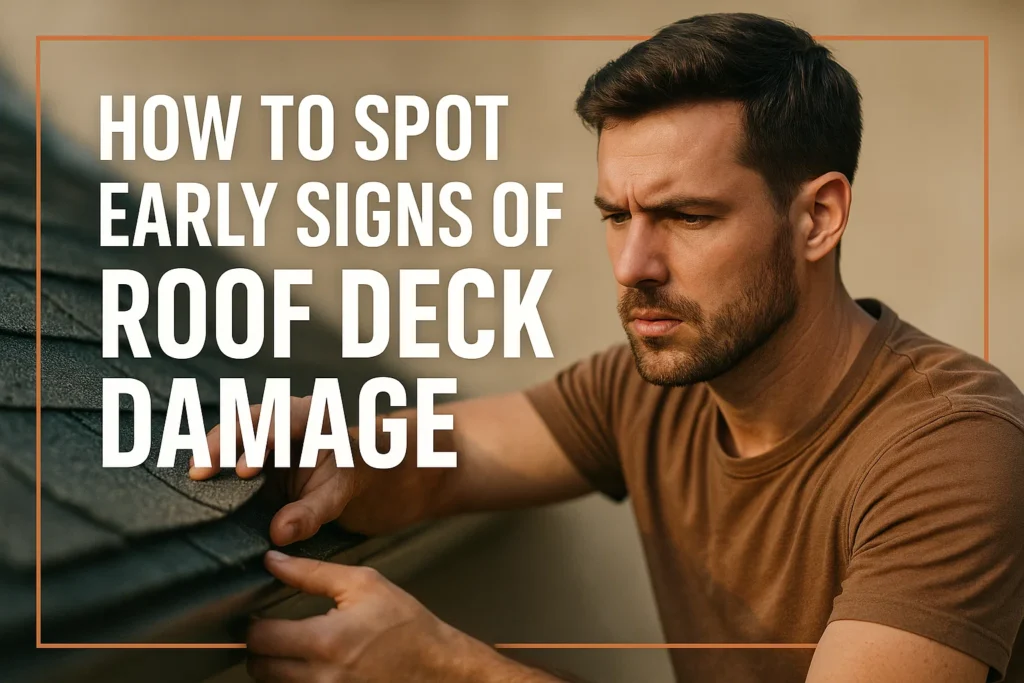Storms are one of the most damaging natural disasters that can affect a home’s roof. Knowing how storms can affect your roof helps homeowners to take early steps to prevent it and have prompt repairs. There’s a lot that hail and high winds can do to damage your roof. Some of it might be obvious, other types of damage might not be apparent at all to the untrained eye, but can have some long-term effects on your roof and the insulation in your home. This guide describes the most common types of roof storm damage and how to fix the damage to protect one of the biggest investments you’re likely to make.
Understanding Storm-Related Roof Damage
Storms can seriously threaten the structural integrity of your roof, causing damage that spans from annoying to uncomfortable, even dangerous to your house. Storm destruction to roofs can range from strong winds that rip off shingles to hail that dents the surfaces of roofing materials.
The roof will suffer wind damage from high winds whether shingles are lifted and torn away by high winds, flashing is loosened, or debris is blowing and scraping against the roofing to cause punctures, dents, or a combination of both. Damage can occur on winds as low as 50 mph, but harshest gusts from hurricanes or tornadoes often bring widespread destruction.
Underneath the high winds, heavy rainfall, and debris, hurricane roof damage can be more than just cosmetic, as roofs can be stripped all the way down to decking and result in water penetration.
Common Areas of the Roof Affected by Storms
Storm damage often targets specific vulnerable parts of the roof, including:
- Shingles
- Flashing
- Gutters and Downspouts
- Roof Decking
- Ventilation Components and Skylights
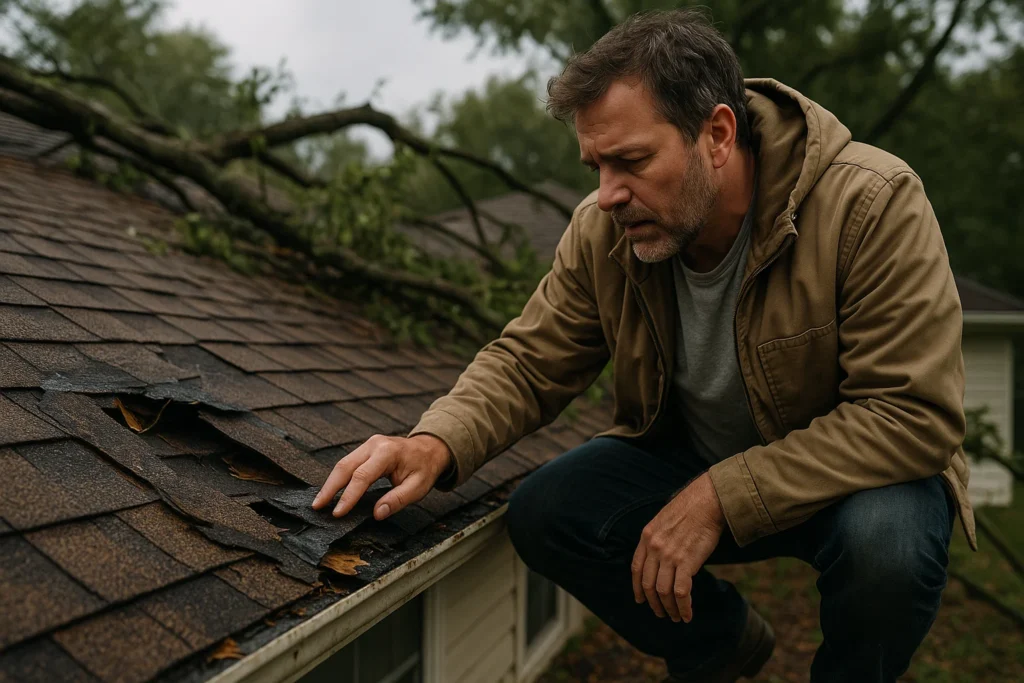
Common Types of Storm Damage to Roofs
It is very important to identify types of damage in these areas as soon as possible for proper repairs and to avoid more issues from occurring.
Wind Damage to Roofs
Strong winds in storms can do severe damage by blowing under, lifting, and ripping off shingles, leaving the roof deck underneath exposed to elements and other environmental risks. Flashing and gutters can also be destroyed by wind or debris striking and penetrating the surface of the roof. Tornadoes and hurricanes are especially devastating, with shingle loss and structural damage occurring frequently.
Signs of Wind Damage:
- Missing, cracked, or curled shingles
- Loose or damaged flashing
- Gutters and downspouts, dented or bent.
- Debris stuck to or trapped under shingles
Hail Damage
Hail can dent, crack, or put holes in roofing materials, particularly on asphalt shingles and metal roofs. Falling hailstones can lead to shingle granule loss, stripping away some of the shingle’s protective capacity so sunlight and water can more easily penetrate the roof. Huge hailstones have been known to penetrate roofs or ruin flashing and vents.
Signs of Hail Damage:
- Dings and Dents to the Shingles or Metal Panels
- Missing granules on asphalt shingles
- Cracked or split shingles
- Damage to gutters, vents, or skylights
Water Damage from Storms
Heavy rain in storms can lead to water seeping in through the wear and tear in your roof. Holes from missing shingles, loose flashing, and dirty gutters let water seep under roofing materials, leading to leaks, rot, mold, and structural damage in the attic, affecting the built-in structure of the house.
Signs of Water Damage:
- Ceiling or wall stains from water
- Mold or mildew odors
- Soft or sagging roof decking
- Leaks at the chimney, vents or skylights
Tree and Debris Damage
Unexpected strong winds can snap tree limbs or even pull trees out of the ground, then drive branches and trees onto roofs. Feldfelder, branches, leaves, and any loose debris can scratch, puncture or crush roofing materials, causing damage or shortening the life of roofing, fencing, siding, etc.
Signs of Debris Damage:
- Obvious dents or holes on the top of the roof
- Damaged or split shingles around the area of debris impact
- Clogged gutters and leaves, or branches
Structural Damage
High force of wind, opening, or wind-driven rain and debris can damage the roof frame or decking. This can affect the integrity of your roof, leading to sag, leaks, and possibly collapse in some areas if the problem is left unaddressed.
How to Inspect Your Roof for Storm Damage
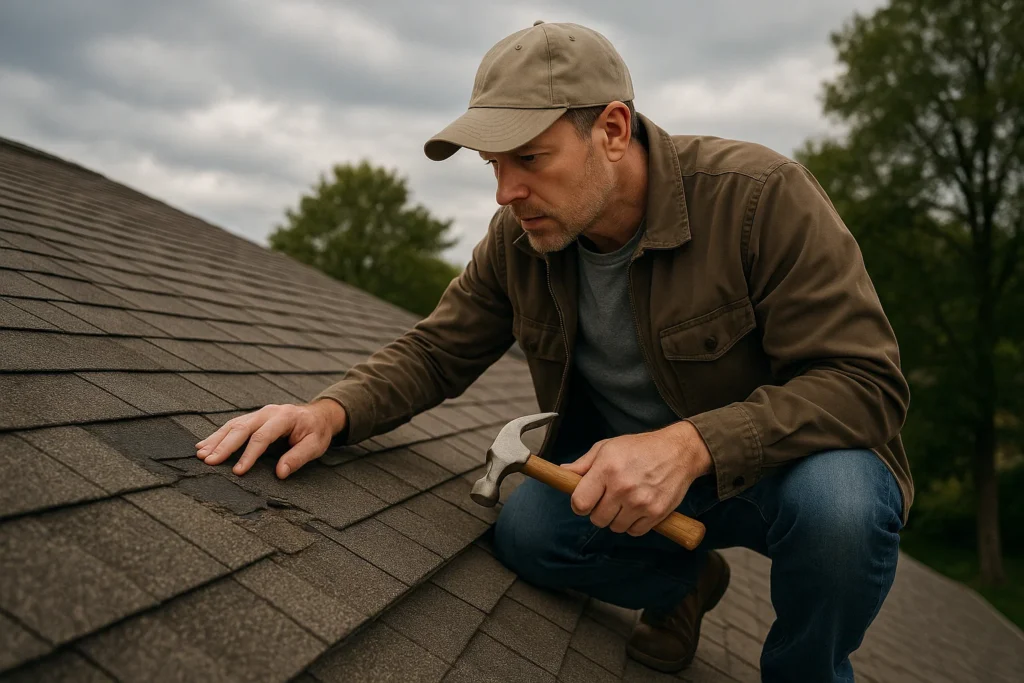
After a storm, it’s critical to do a roof storm damage inspection to detect both surface-level and hidden issues. Here’s how to start:
- Inspection – It’s hard, but try to see damaged shingles that are missing or damaged, and debris or marks on your rooftop.
- Examine Gutter and Downspouts: Look for dents, obstructions or any other issues that would interfere with drainage.
- Inspect for Water Damage: Inspect all ceilings, attics, and walls for stains, water damage and leaks.
- Check Flashing and Vents: These should be secure and well-sealed.
Bring in a Pro: If you want a complete inspection, particularly following a major storm, call a professional roofer to inspect and document damage.
Hiring Storm Damage Roofing Services
Finding a trustworthy storm damage roofing contractor is essential to get quality workmanship and to promote longevity of your new installation. Find storm damage roofers who are licensed, insured, & experienced in storm damage repairs. Look at online reviews, ask for references and make sure they know how insurance claims work. An honest company will give you a comprehensive bid, do their inspection in detail, and stay in touch with you.
Does Insurance Cover Storm-Damaged Roofs?
Many homeowners’ insurance policies include storm damage roofing repairs in their coverage. Coverage depends on the policy and region, so it is essential to check your policy and document damage promptly.
Dealing with Faver Roofing contractors help you in guiding and serving with professional roof damage from storms.
Conclusion:
Every storm has the potential to damage your home in multiple ways. Knowing how a storm can attack your roof can be the first step to early signs that your hail, wind, heavy rain or wind or any combination of these are causing damage on your home. Routine examinations, preventive maintenance, and ensuring that your roof is repaired at the first sign of trouble can mean the difference between life and death for your roof, and cost you thousands in repairs. If you suspect storm damage, call a knowledgeable Roofing Contractor to get a complete inspection and professional service for any repairs you may need.
Frequently Asked Questions (FAQs)
Survey the damage to your roof as soon as it’s safe, ideally within 24-48 hours after the storm has ended.
“Minor repairs — three or four replacement shingles — can stay mild and manageable enough for you to on an hourly basis do it yourself,” says Feltovich, “but if we have a lot of damage, safety or reconstruction work — then definitely call a professional roofer in.”
Most policies cover storm damage, but not all coverage is alike. Record any damage and get in touch with your insurer soon.
Check for dents, cracks, missing granules on shingles, or damage to gutters and vents. A professional inspection can confirm.
Make sure they are installed correctly, use wind resistant materials and trim trees close to the home.


